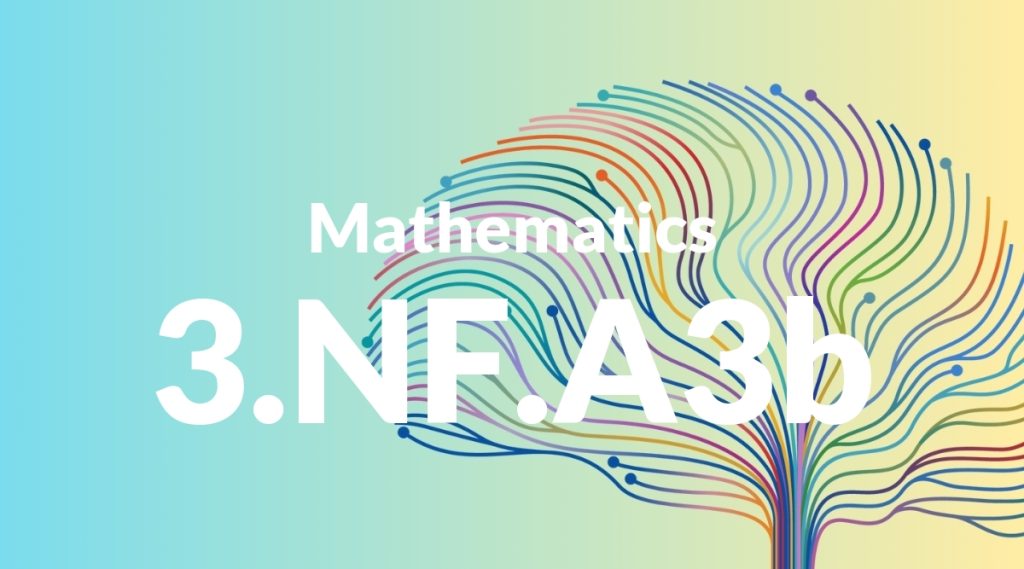Standard: 3.NF.A3b – Recognize and generate simple equivalent fractions, e.g., 1/2 = 2/4, 4/6 = 2/3. Explain why the fractions are equivalent, e.g., by using a visual fraction model.
Grade level: Grade 3
Subject: Mathematics
Domain: Numbers & Operations – Fractions
Teacher Overview
This standard focuses on helping students recognize and generate simple equivalent fractions. Understanding equivalent fractions is crucial as it lays the foundation for more advanced fraction concepts, such as comparing, ordering, and operations with fractions. Before tackling this standard, students should have a solid understanding of basic fractions, including the concepts of numerator and denominator, and how to represent fractions visually.
After mastering this standard, students will be able to compare and order fractions, as well as perform operations like addition and subtraction with fractions that have like denominators.
Common Misconception 1
A common misconception is that fractions with different numerators and denominators cannot be equivalent. This arises from a lack of understanding that fractions can represent the same value even if they look different.
Intervention 1
To remediate this, use visual aids like fraction strips or circles to show how different fractions can represent the same part of a whole. Encourage students to create their own equivalent fractions using these models.
Common Misconception 2
Another misconception is that changing the numerator or denominator changes the size of the pieces. Students may think that 1/2 is always larger than 2/4 because 1 is greater than 2.
Intervention 2
Address this by providing hands-on activities where students manipulate fraction strips or circles to create equivalent fractions. This will help them see that the size of the pieces remains the same even though the numbers change.
Prerequisite Knowledge
Students should understand basic fraction concepts, including numerators and denominators, and how to identify and represent fractions visually.
Subsequent Knowledge
Students will develop the ability to compare and order fractions, as well as add and subtract fractions with like denominators.
Instructional Activities
- Using fraction strips to create and compare equivalent fractions
- Drawing visual fraction models to explain why fractions are equivalent
- Playing fraction matching games
- Solving real-world problems involving equivalent fractions




